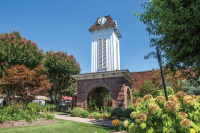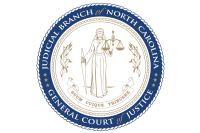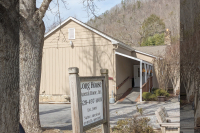Jackson schools hope to land 0 percent loan

Jackson County is hoping to save $2.3 million on the cost of completing critical repairs in Jackson County Public Schools through a loan program that would lend the $9 million needed at 0 percent interest.
“This is what I consider to be extremely good news,” Jackson County Manager Don Adams told commissioners at their Dec. 13 work session.
The program, called the Qualified Zone Academy Bond program, entices private banks to grant 0 percent loans to school districts by offering them a federal tax credit instead of cash interest payments. It’s a federal program, but each state has its own application process for schools to navigate.
“It’s an excellent, excellent deal, and the school and finance on both sides have been working very hard on it,” Adams said.
Last week, commissioners voted unanimously to apply to get qualified from the state to receive such a loan. The school board is expected to take a similar vote at its Dec. 20 meeting, which had not happened as of press time. If the state approves the applications — separate applications will be submitted for each school where the money would be spent, six in all — and allocates loan capacity for the $9 million, the next step would be to find a bank that is interested in the tax credits to be gained from participation. At that time, a public hearing would be held before commissioners voted on actually borrowing any money.
“There are multiple steps,” Adams told commissioners. “This is the first.”
Related Items
All along, commissioners had been planning to pay down the debt using sales tax revenues earmarked for public school capital projects. They figured on taking out a 15-year loan with an interest rate between 3 and 3.5 percent. The majority of the sales tax revenue stream would go to paying down the debt. However, scoring a 0 percent interest loan would free up $270,000 in the first year alone, saving a total of $2.3 million over the 15-year term.
Jackson County pays off its debts using level principal amortization, which means that payments are larger earlier in the loan term and smaller later in the loan term so as to minimize the amount of interest paid. Likewise, the annual savings through QZAB would be larger in the early years, when the overall payment would be larger, and smaller in the later years, when the overall payment would be smaller.
The savings would free up debt capacity to address other needs in school facilities.
“We are positive about the QZAB opportunity,” said Jackson Schools Superintendent Michael Murray. “Any time we can work with the county to save dollars, everyone benefits.”
The school district hasn’t yet figured out where it would most like to see the additional debt capacity used, Murray said. However, there will likely be no shortage of opportunities to put it to use.
The state of school facilities has been a recurring concern in Jackson County, with Murray’s yearly budget presentation to commissioners including multi-million-dollar capital requests for the last couple years running.
In 2015, Murray asked for $3.3 million in capital funding, mainly for nuts-and-bolts expenditures such as replacement of aging roofs and heating systems, though some line items for new or renovated athletic facilities were included in the ask. Commissioners funded $2.4 million of the request — as much as they wanted to, they said, they couldn’t go any higher.
The 2015 request was based on what was listed for year one of a five-year plan Jackson Schools had adopted to get school facilities up to snuff. The total cost of implementation was estimated at $14.6 million. When Murray returned to discuss the 2016 budget with commissioners, he was firm in his message that the county couldn’t afford to push off the timeline any further.
“There’s some point where you say it’s just not right to have kids sitting with buckets in classrooms,” Murray told commissioners in January, alluding to the issues schools had been having with leaky roofs.
Commissioners got the message. In March, they gave the school system the go-ahead to start tackling the problems identified in the five-year plan, passing a resolution that declared their intention to pay for the projects from the county fund balance but later take out a loan to pay themselves back for the expenses. The idea was to minimize the amount of interest to be paid while also letting the schools get to work immediately.
While the five-year plan mostly listed replacements to roofs, water pipes and heating systems, it also included some athletic expenditures such as an artificial turf football field, a resurfaced track and a new baseball field. Commissioners told the school system to hold off on those projects, allocating only enough money to cover critical building needs.
With one exception. Last year, the school system landed a $200,000 grant from the NFL to install an artificial turf football field, one of only 17 grants awarded nationwide. Commissioners wound up allocating more than $400,000 toward the $894,000 total cost. The field was completed in August.
The QZAB loan is not a done deal. In addition to getting the school and county boards behind it and gaining state approval, Jackson will have to find a bank willing to offer such a loan.
“Once we get qualified, then we still have to have a bank that wants tax credits,” Adams said. “Tax credits, they’re only good if you make profits. If you don’t make a profit then a tax credit doesn’t do you any good. There’s not a lot of banks in this market.”
However, he said, the county has identified a bank willing to work with it and is hopeful the deal will pan out.
Regardless of the outcome, the QZAB process will not affect the timeline of repairs in the schools. Those projects are already underway after commissioners gave the school board the go-ahead to start last year. The only question is by which mechanism the county will pay itself back for the expenditures now coming out of its fund balance.
“The beauty of it is two-fold,” Adams said. “It allows us to accomplish what our original task was. It’s sort of a safety net if you call it that and hopefully it will allow us to plan for future projects that will have to be discussed and approved by both boards.”









